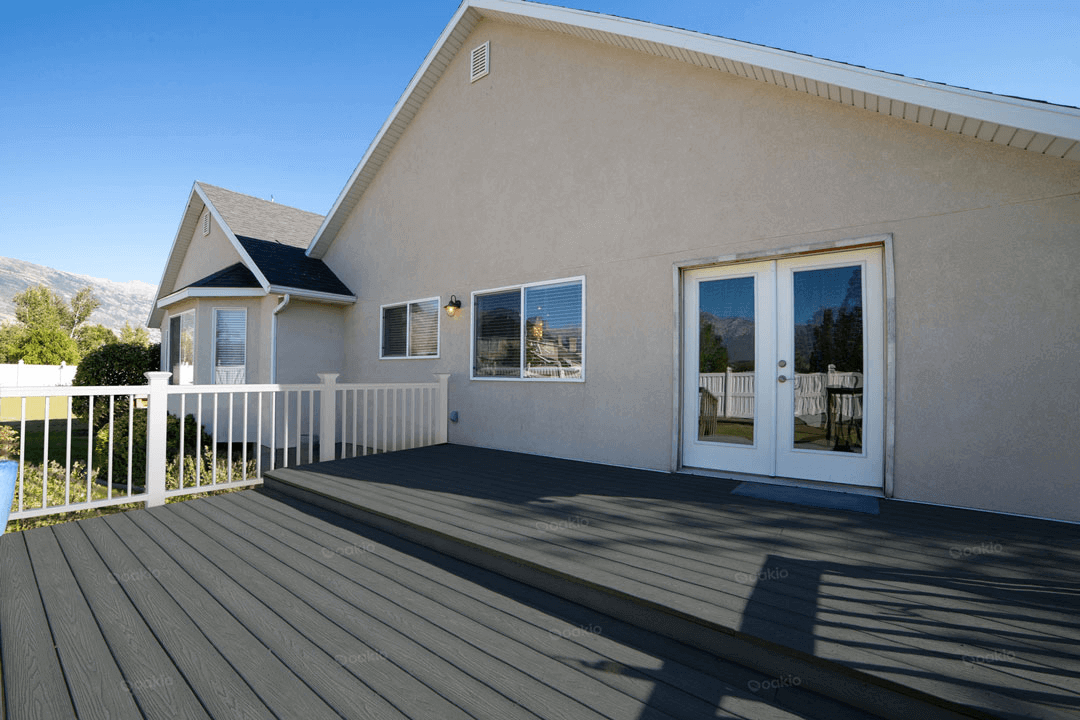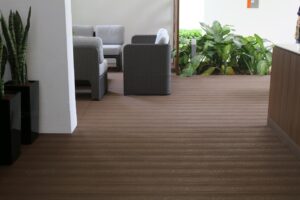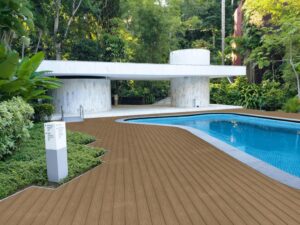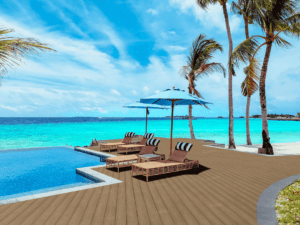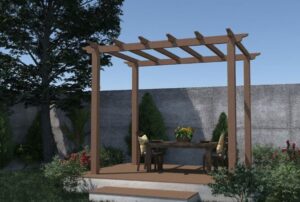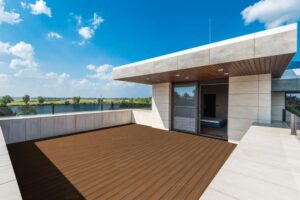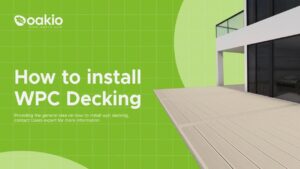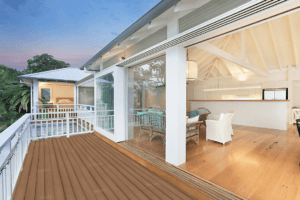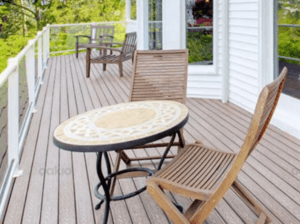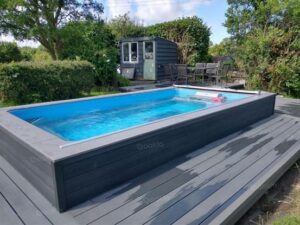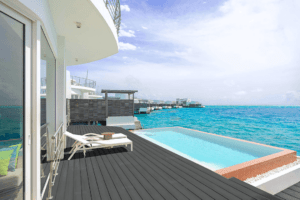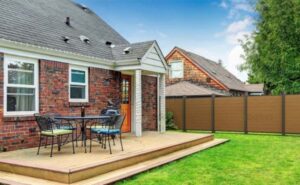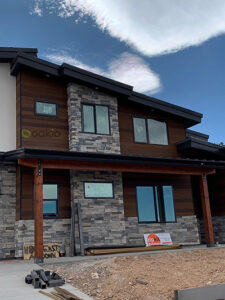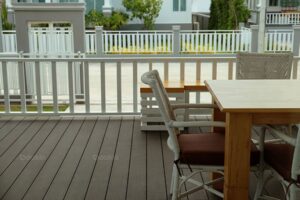Pros and Cons of Composite Deck Railings
In the past, when a homeowner chose deck rails for their deck, traditional wood or metal was the most common option. Today, composite deck railings are gaining popularity thanks to their sturdy and versatile quality.
However, many homeowners are still at a standstill with these railing types, and many are wondering and asking how advantageous or disadvantageous it is to have composite deck railing in their properties.
In this article, we aim to provide you with the most detailed and comprehensive answer and share the honest pros and cons of having composite deck rails on your property. Let’s dive in!
Is Composite Deck Railing Worth It?

Yes, composite railings are worth it and there are several reasons why we’ve come to that conclusion.
First, composites are pretty hardy materials made up of wood and plastic fibers, meaning they offer top-notch durability, rot resistance, mold and mildew resistance, and even insect-inflicted damage.
Apart from those, composites also boast something homeowners would like the most: only minimal maintenance is needed to keep your railing pristine and welcoming. If your railing has dirt and mud attached, you can just hose it down and see it shine like new.
In addition, composites are made of recycled materials, so if you’re concerned about your carbon footprint and want to take part in preserving the environment, going composite is an excellent thing to do!
Deck Railing Parts
A deck railing has several parts that work interconnectedly to keep your patio or deck safe and sound:
1. Top Rail – the top rail is a horizontal rod that runs along the upper edge of the rail. This part comprises the safety a railing system provides.
2. Balusters – these are vertical posts that support the top rail. Balusters ensure the middle part of the railing is inaccessible, especially for small kids who like exploring the outside.
3. Posts Sleeves – these cover the structural posts of the railing, protecting them from the elements and improving visual appeal.
4. Post Caps – post caps can be found on top of the posts. Also functioning as post sleeves, post caps offer protection and add beauty to your railing system.
5. Infill – like balusters, the infill makes up the part that prevents falls and accidents while also functioning as an aesthetic part of the rail and deck.
Pros of Composite Deck Railings
Composite deck rails offer many advantages, perfect for homeowners looking for versatile, durable, and aesthetically pleasing deck railing systems. Here are the pros of owning a composite deck railing:
Wood-Like Appearance and Texture
Composite railings mimic the feel and look of traditional wood—-giving you a warm, pleasing atmosphere for your deck, patio, and yard. They offer these without the fuss of natural wood, which is prone to moisture, splintering, and termite damage.
Wide Range of Colors
Much like traditional wood, where you can customize its color, composite deck railing offers a wide range of colors. If you want to pattern your railing design based on your property’s existing architecture and mood, you just have to choose the best color! May it be the classic wood look or something dark to resemble modern architecture, you got it.
Minimal Maintenance
As mentioned earlier, composite railings don’t require traditional and premium wood maintenance—all thanks to the composition of wood and plastic fibers, with resin reinforcing the material to resist weather, mud, dirt, snow, mold, and mildew.
All you actually need to do is splash it down with a bucket of water or hose it down, and it’ll look like new!
Sturdy and Long-Lasting
Compared to traditional wood., composite deck rails are sturdy and long-lasting. They are decay, splinter, pressure, insect, mold, UV, and weather resistant—making it a good choice for homeowners looking to have a perfectly-looking deck rail for years and decades.
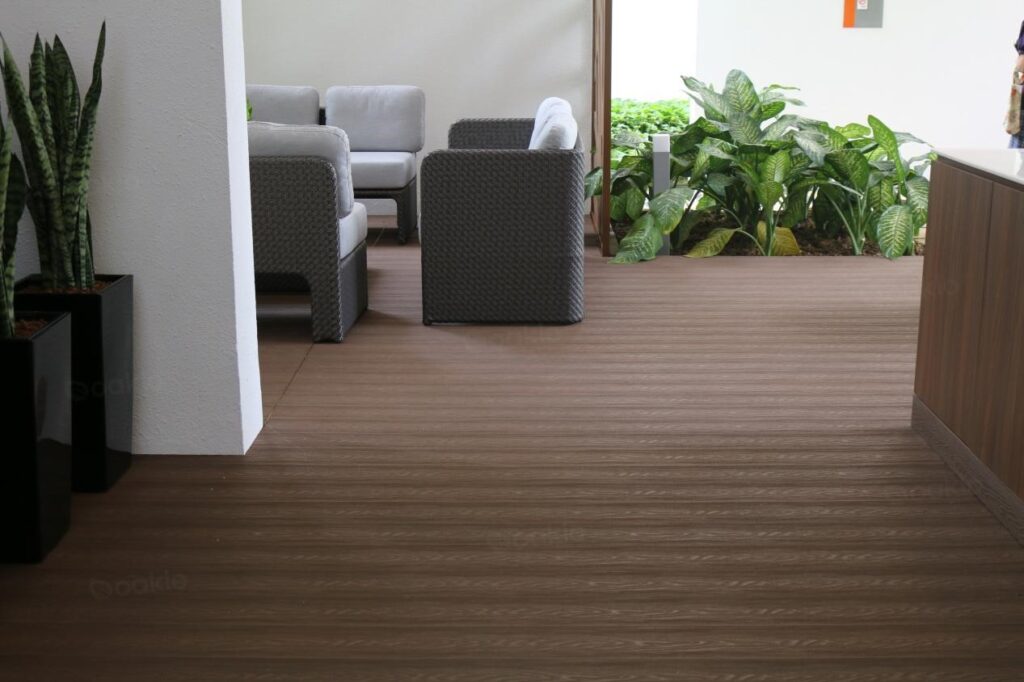
Backed By Multi-Year Warranties
Many composite manufacturers offer multi-year warranties as a testament to their product’s reliability and customer satisfaction. At Oakio, we provide a 25-year maximum warranty for our top-of-the-line Proshield.
These warranties are designed to give you peace of mind, fully knowing that your investment won’t go to waste in just a few years after installation.
Environmentally Friendly
Composites are environmentally friendly, and all boils down to the materials used. Composites are made from wood and plastic fibers, which are all recycled. By doing so, we help reduce plastic waste and its ability to harm our environment. Composites also need minimal maintenance, reducing the costs of chemicals and potable water usage.
Effortless Installation of Lighting Wirings
Composite deck railing systems are built with grooves or canals, making wires and lights easy to conceal and install. All you need to do is buy your preferred lighting and install it yourself or have it installed by an electrician, and your railings will be as beautiful as the moon!
Curvability for Dramatic Effects
This might not make sense for everybody, but did you know composites can be curved? Yes! You read that right! Composite railings can be bent and shaped to your desired design; they can also be altered to fit your home’s architectural design.
User-Friendly
Composite deck rails are easy to work with. You can install one yourself if you have a little bit of experience in woodworking and carpentry and if you have the required tools and materials to install them correctly. Some even have installation manuals with the package.
High Customization Potential
Since composites are readily available, there’s high customization potential for a composite deck railing system. Some manufacturers even offer deck railing kits with customized parts, colors, and textures to match your preferences!
Cons of Composite Deck Railings
Unfortunately, there isn’t a perfect railing type in the world, and everything has cons, including composites. Here are some of the disadvantages of owning composite deck rails:
Higher Initial Expense
Unfortunately, many prospective composite railing homeowners are shooed away with this. Composite railings have higher initial expense than other railing types, such as traditional wood. But while your initial cost is high, it’s good to note that long-term savings will be better with a composite.
Increased Structural Support Requirements
Since composites weigh heavier than traditional wood and metal railings, which are most commonly made of aluminum, they need a reinforced frame to support their weight and protect them against pressure and force.
Potential for Sagging and Bending
Sagging and bending may occur if your composite deck railing isn’t supported with a quality frame. Heavy-duty structural support should be established from the installation get-go to prevent this.
Softening in Extreme Heat
A composite rail may soften when subjected to extreme heat due to microscopically melting plastic fibers. If you live in an arid area where high temperatures are typical, a composite may not be the railing type you’re looking for.
Grilling Clearance
If you love grilled foods and grilling on your deck, note that composites need a reasonable distance from your griller. Extreme heat is the enemy of composites, and only a handful of composite products, such as our Matshield, have exceptional fire and heat resistance.
Fading or Staining Over Time
Despite their resistance to UV and stain, there are also times when fading and staining happens to a composite deck railing system. If the composite is installed in an area where sunlight is concentrated, fading is expected, although to a minor degree. Staining also happens when moisture is high in a particular area.
Limited Color Variation
Compared to traditional and premium wood, which can be color-customized, composites don’t offer the same design flexibility. Some manufacturers offer 6-10 color options, while some offer as much as 12, like Oakio’s Proshield. The bad thing is you can’t paint your composite over to change color.
Limited Repair Options
Unlike traditional wood, which can be repaired or replaced with basic carpentry tools and equipment, you have limited repair options when your composite deck rail is damaged. At times, the only choice you’ll ever have is to replace entire sections or components.
Secure Your Composite Deck Railings with Oakio!
Although composite deck rails have shortcomings, investing in them is still a wise choice, primarily due to their durability, versatility, and low-maintenance features. Additionally, you can also secure and improve your railing system with Oakio!
We offer the best composite products that can be retrofitted to your existing deck railing, making it more secure, elegant, and, most of all—more welcoming to your loved ones and guests!
At Oakio, as an industry-leading producer and innovator of composite products, your satisfaction is our mission. We want to express this by offering you four distinct products designed and manufactured with gold-standard quality to fit your varying decking and railing needs.
Get exclusive deals and discounts, and be the first to be updated when we publish informational guides like these when you subscribe to our newsletter today. Sign up now!
Trending Reading
What Are the Differences Between the WPC Board and PVC Board?
[2024 Update] How Long Does WPC Decking Last?
